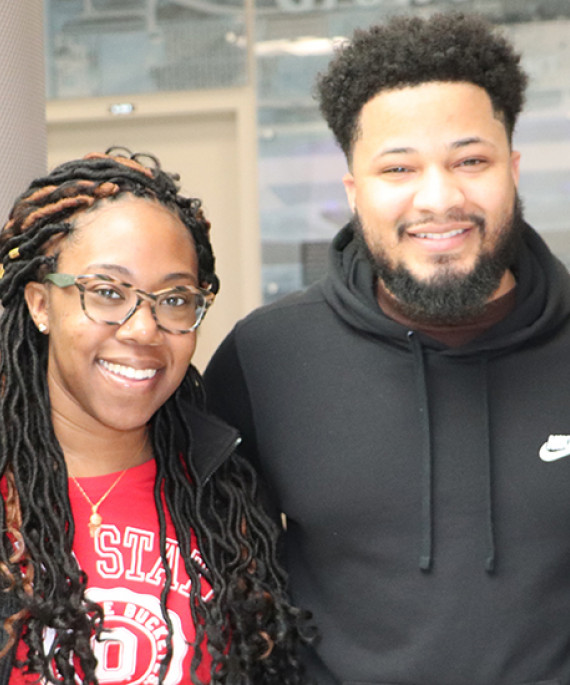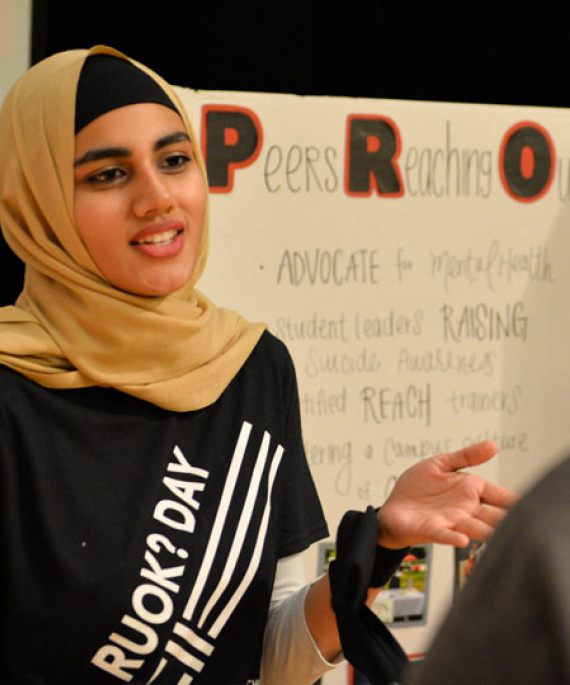
When the lights went out, anxious thoughts needled the master's student. During the day, there were no lulls in his class schedule — no time to think.
Come nightfall, he ruminated nonstop about his studies. A family situation weighed heavily on him. Hours dragged by. When his alarm finally rang, he was whipped, and the day hadn’t yet begun.
“I slept 10 hours in seven days,” he said. “It’s not sustainable for my program or life in general. I was a walking zombie.”
The student is in good company. A 2013 survey by the Association for University and College Counseling Center Directors found that nearly 42 percent of college students thought anxiety was the top-presenting concern in their lives. Thirty percent reported that stress had negatively impacted their academic performance.
Anxiety is the most common mental-health diagnosis among college students, nationally and at Ohio State, but its equally destructive cousin, depression, also is on the rise.
It’s no wonder. Life can be rough for college students. Midterm exams and term papers are just the obvious stressors.
“Many are working jobs and they’re under financial pressure to get through school,” said Paul Granello, associate professor of counselor education in the College of Education and Human Ecology. College students are saddled with responsibilities they’ve never before faced.
Factor in other problems associated with being 20 years old, and tension escalates. “All the intimacy issues, figuring out identity and who they are, issues of finding a partner in life,” he said. “It’s their first time out on their own — they’re away from family and their support system.”
But the thing is, Granello said, students don’t have to be stressed out. Ohio State is an enriching environment with many services to help students avoid the pitfalls of anxiety and depression.
When a graduate student told Granello about his sleeplessness, his professor referred him to Ohio State’s Stress Management and Resiliency Training (SMART) Lab. Granello and EHE opened the lab in 2016 in partnership with the Office of Student Life.
A skylight spanning the lab bathes the space in light. Rooms on either side offer quiet spaces for individual coaching and group meditation. A bank of computers in the lab teaches students to use biofeedback to recognize and combat stress.
There, a student recently clipped a sensor to his earlobe, wiring himself to an app that monitors his heart-rate variability — the spaces between heartbeats, or how the heart rate changes over time. This variability is a good measure for overall stress, Granello said.
A pulsating color wheel helps people visualize their breathing rate and depth. Red indicates stress. Green means the heart rate is coherent — minus the wild variations that set people on edge. The student drew in very deep and even breaths, which kicks in a parasympathetic response — a kind of brake system on the fight-or-flight reaction that triggers stress. The wheel on the screen began to be outlined in green. The student was calm.
After just three to four sessions in the lab, students learn to harness control of their automatic nervous systems. They essentially have mastered the art of overriding evolutionary factors that safeguarded humans for millennia.
There is science behind the concept.
When the nervous system is up-regulated, it’s mobilized for a perceived threat. If you’re down-regulated, you’re depressed. A lot of threats you perceive today aren’t actually threats.

In other words, that upcoming midterm is not a wild animal in attack mode. Learning to deep breathe can restore equilibrium, put the stress into perspective and equip students to better tackle the task at hand.
“It can have a significant impact on their health if they do it regularly — lower blood pressure, improved performance on tests, all kinds of stuff,” Granello said.
And the help is not limited to deep-breathing exercises. The SMART lab offers free individual wellness coaching and group sessions in meditation and relaxation.
Students have for years been dealing with college stress in self-destructive ways — not eating well, not exercising, drinking excessively and taking drugs.
“Instead of doing that, if we would take an ounce of prevention and do healthy things to cope . . . then we could avoid crisis situations," Granello said, "or at least give the person tools to get through those times.”
And that, come finals week, could significantly reduce stress-affected "zombies" on campus.
SMART lab details
Students can schedule free individual or group sessions at Ohio State's Stress Management and Resiliency Training lab. Coaches help students learn to use lab resources to engage in practical, science-based steps to reduce stress and achieve wellness. The lab, 445 PAES Building, 305 W. 17th Ave., is open Monday-Thursday, 10:30 a.m. to 5:30 p.m.
Individual sessions for faculty and staff are also now available.




